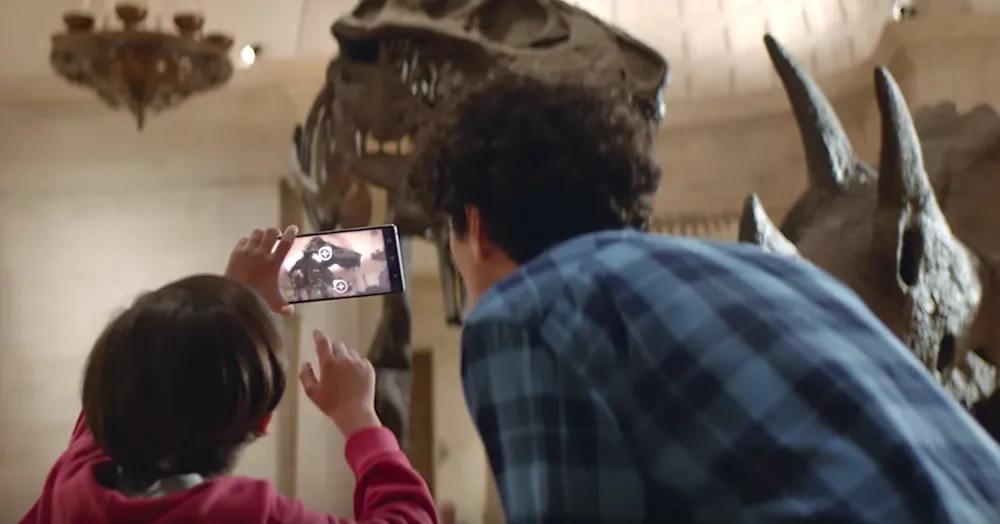Last week, at a Google press event UploadVR had the chance to speak with Google Tango’s director of engineering, Johnny Lee. Tango is a software/hardware solution that allows smartphones and other mobile devices to understand their location in 3D space and translate that information into powerful applications and programs. According to Lee, this technology is also the key to solving one of the biggest problems in the burgeoning virtual reality industry: inside-out positional tracking for wireless VR headsets.
“We’ve solved it here,” Lee said, gesturing at a Tango-powered, Lenovo Phab 2 Pro smartphone. “As you can see [inside-out positional tracking] clearly works on this phone…We’ve even had people strap a tablet sized device with Tango built in into a custom VR headset and the positional tracking worked just as well as it does here…The only thing really holding us back right now are the thermals. Right now, phones just get way too hot if we ask them to run positional tracking and split-screen stereoscopic image at 90 fps…As Daydream matures and Tango continues to improve, the sophistication around tracking will also evolve over the next 2-3 years.“
Lee declined to comment when asked when exactly people can expect to see a commercially released VR headset with this kind of capability.
https://youtu.be/iHN4c7FYXYs
Tango’s director of product, Nikhil Chandhok, concurred with Lee’s assertions that, with Tango, inside-out positional tracking for VR is possible, but there are still hurdles to cross:
“We have it working. We can do inside-out tracking with six degrees of movement and we can do it today. There are just some concerns we need to address first. For example: how do you keep people safe when they are walking around freely with a headset on?…The VR use cases are just much more demanding than what we’re doing right now, however, there will be more interesting use cases in the future.”
Today’s high-end VR systems — the Oculus Rift, Playstation VR, and HTC Vive — all use what’s called “outside-in” positional tracking. This means that they all require some sort of camera, laser or sensor that live outside of the headset itself in order to understand their positions in space. Without these outside components, one could not lean into objects in an experience, and would be limited to the left, right, up, down, tracking currently seen in mobile VR headsets such as Google Cardboard or the Samsung Gear VR.
Inside-out positional tracking would allow virtual reality to become truly wireless and enable a whole host of incredibly powerful use cases. It is the latest “holy grail” for the VR scene, with most of the major companies scrambling to be first to market with the world’s first wireless, position-tracked HMD. At this year’s Oculus Connect conference, the Facebook-owned company showed off a prototype code-named “Santa Cruz” that utilized a form of inside-out tracking separate from Tango, and Microsoft is using its HoloLens tracking to bring the tech to wired VR headsets. Qualcomm and Intel are just a few of the companies trying to solve this problem as well.
The race is on for positional tracking supremacy.


























